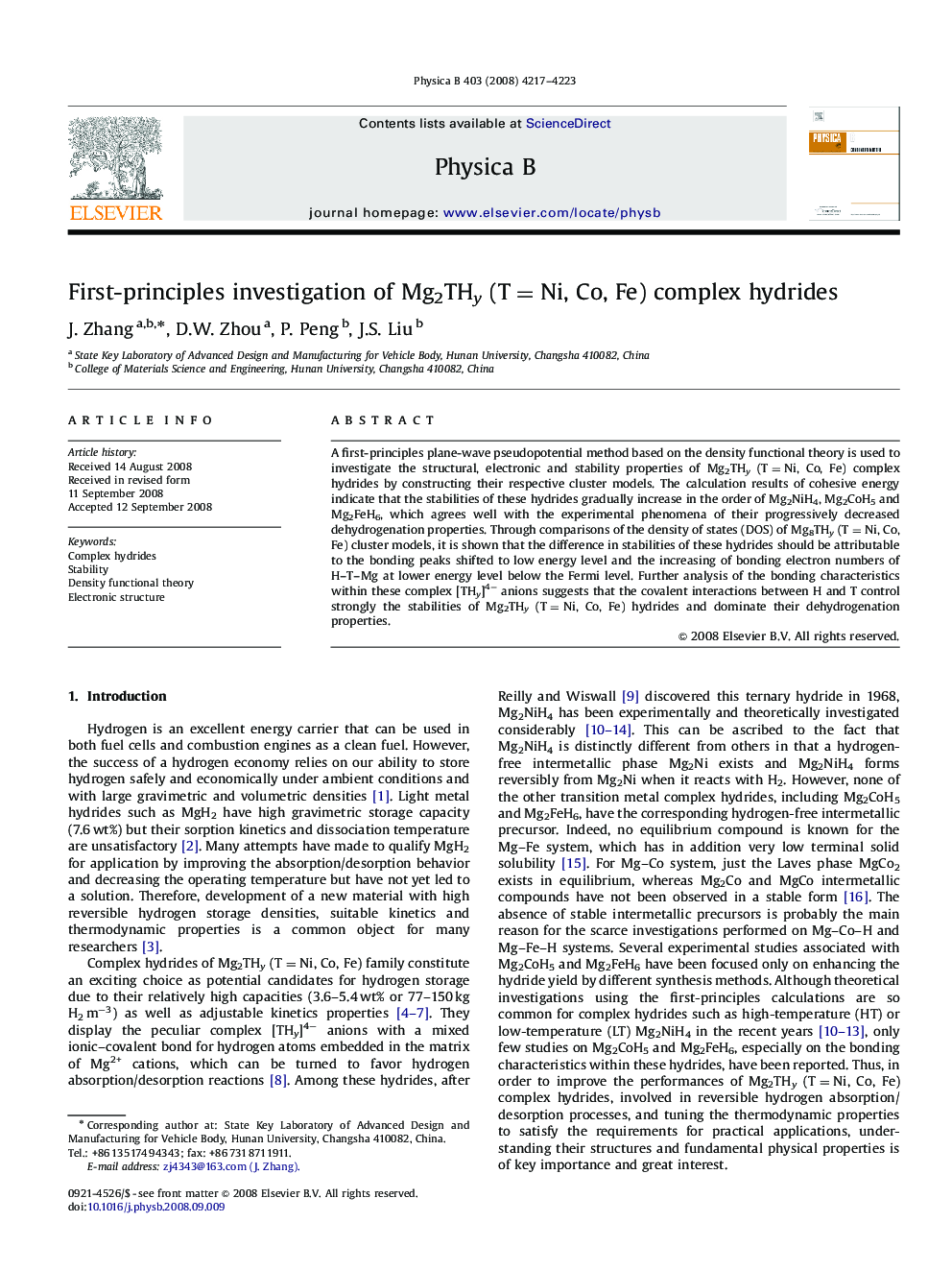| Article ID | Journal | Published Year | Pages | File Type |
|---|---|---|---|---|
| 1812803 | Physica B: Condensed Matter | 2008 | 7 Pages |
A first-principles plane-wave pseudopotential method based on the density functional theory is used to investigate the structural, electronic and stability properties of Mg2THy (T=Ni, Co, Fe) complex hydrides by constructing their respective cluster models. The calculation results of cohesive energy indicate that the stabilities of these hydrides gradually increase in the order of Mg2NiH4, Mg2CoH5 and Mg2FeH6, which agrees well with the experimental phenomena of their progressively decreased dehydrogenation properties. Through comparisons of the density of states (DOS) of Mg8THy (T=Ni, Co, Fe) cluster models, it is shown that the difference in stabilities of these hydrides should be attributable to the bonding peaks shifted to low energy level and the increasing of bonding electron numbers of H–T–Mg at lower energy level below the Fermi level. Further analysis of the bonding characteristics within these complex [THy]4− anions suggests that the covalent interactions between H and T control strongly the stabilities of Mg2THy (T=Ni, Co, Fe) hydrides and dominate their dehydrogenation properties.
